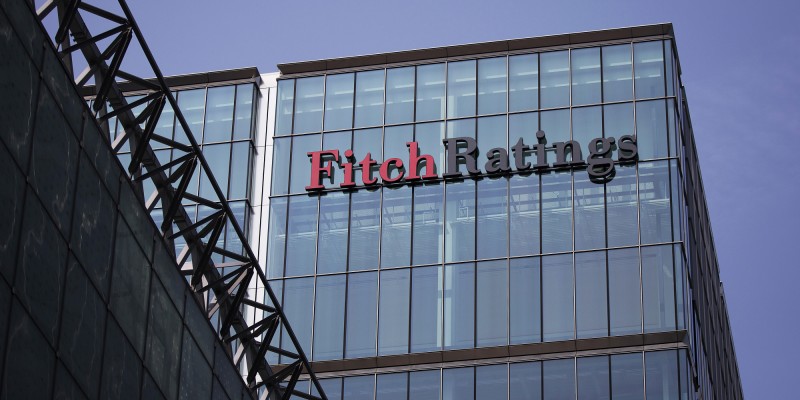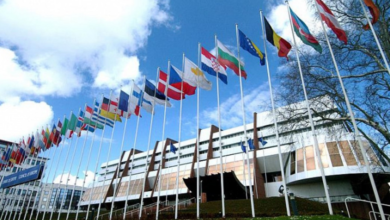Fitch applies criteria changes to Armenia’s ratings

Fitch Ratings has affirmed Armenia’s Long-Term Foreign and Local Currency IDRs at ‘B+’ with Stable Outlooks. The issue ratings on Armenia’s senior unsecured Foreign-Currency bonds have also been affirmed at ‘B+’. The Country Ceiling has been affirmed at ‘BB-‘ and the Short-Term Foreign Currency IDR at ‘B’. Fitch has assigned a new Short-Term Local Currency (STLC) IDR rating of ‘B’.
Assignment of STLC IDR
In line with the updated guidance contained in Fitch’s revised Sovereign Rating Criteria dated 18 July 2016, and as part of a broader portfolio review, the assignment of a STLC IDR of ‘B’ to Armenia is consistent with Fitch’s approach to assigning ST ratings by using its Long-Term/Short-Term Rating Correspondence table to map the STLC IDR from the LTLC rating scale. According to Fitch’s Rating Definitions, the Fitch Rating Correspondence Table is “a guide only and variations from this correspondence will occur”. However, variations to this approach are rare in the case of sovereign ratings.
Armenia’s STLC IDR is derived from the mapping to its LTLC IDR of ‘B+’.
KEY RATING DRIVERS
The ‘B+’ rating is supported by Armenia’s favourable business climate, relatively high per capita income level, IMF Extended Arrangement programme, and the extended maturity profile and low interest burden of public debt. Conversely, the ratings are weighed down by high net external debt, the large share of public debt denominated in foreign currency, a highly dollarised banking sector and tensions in relations with some neighbouring countries.
Armenia’s economy continues to grow at a healthy rate, and Fitch expects this to remain the case during the forecast period, despite the continued negative external shock from Russia and the wider CIS region. The economy has faced significant external headwinds since late 2014, as the plunge in oil prices saw major contractions in the economies of energy exporters across the CIS. Nevertheless, in 2015 the Armenian economy grew by 3%, with a strong net export adjustment outweighing weakness in domestic demand. Although remittance inflows plunged and export demand fell, a depreciation of the dram, diversification of export destinations and increased export capacity in the mining sector helped offset this.
2016 started strongly, with the economy growing by 4.4% year on year in 1Q16. Industry, agriculture and some service sectors made the biggest positive contributions, pointing to the continued importance of the external sector. Growth in exports to countries outside the region, notably Iraq and China (8.8% and 11.1% of exports, respectively, in 2015), was particularly strong. Fitch expects the economy to grow by 3.5% in 2016, up from 2.0% at the time of our last review, although still below the ‘B’ median of 4.2% (five-year average). Growth is expected to average 3.6% in 2017-18, as the Russian economy returns to positive growth and demand in the immediate region picks up more broadly.
The current account deficit narrowed to 2.7% of GDP in 2015 (‘B’ median: 7%), compared with 7.3% in 2014, thanks to significant import compression. In US dollar terms, merchandise imports fell by 26% year on year in 2015, compared with a much more moderate 4.2% fall in exports. The relative resilience of exports was supported by some export diversification.
Despite the sharp narrowing of the current account deficit, net external debt rose to 46.8% of GDP at end-2015, from 40.7% of GDP a year earlier (and well above the ‘B’ median of 18.6%), largely thanks to revaluation effects. Fitch expects the current account deficit to average 2.3% of GDP in 2016-18, owing to strong export performance and relatively subdued import growth. This will help net external debt to fall to 40.7% of GDP by 2018. International reserves (including gold) reached USD1.8bn at end-2015, equivalent to 4.2 months of current external payments (CXP), above the ‘B’ median of 3.6 months. Fitch expects reserves to remain at around 4.6 months of CXP in 2016-18.
Fiscal dynamics deteriorated in 2015, as weakness in the tax-rich domestic economy weighed on revenue and expenditure continued to grow strongly. The fiscal deficit reached 4.8% of GDP, compared with an original target of 2.3%, and above the ‘B’ median of 4.3%. The deterioration continued at the beginning of 2016, with the deficit widening on the central government measure widening to AMD64.4bn, compared with AMD40.3bn in the same period in 2015. Fitch now expects a general government shortfall equivalent to 4.5% of GDP this year, well above the original 3.5% target. Beyond that the deficit is expected to narrow, to 2.8% of GDP by 2018, as tax-rich domestic demand growth recovers. Fitch expects the general government debt/GDP ratio to reach 52.4% of GDP in 2016, from 48.7% in 2015 (‘B’ median: 51.8%).
Tensions with neighbouring Azerbaijan continue to weigh on the rating, and the security environment in the region has deteriorated since our last review. In April, armed conflict in the disputed region of Nagorno-Karabakh reached its most serious level since the 1994 ceasefire, and dozens of soldiers were killed on both sides. A truce was called on 3 April, but tensions remain high. Although a permanent solution to the conflict appears some way off, the continued active involvement of the OSCE Minsk Group, chaired by Russia, France and the US, indicates that a prolonged outbreak of fighting is unlikely. Fitch’s base case is that the conflict will remain frozen during the forecast period. Armenia’s border with Turkey has been closed since 1993, depriving Armenia of a major potential trade partner. Fitch does not expect a normalisation of relations between the countries during the forecast period.
In the context of a sharp fall in the dram at the end of 2014, and with dollarisation of loans at above 65%, the situation in the banking sector remains manageable. Asset quality has deteriorated, with the non-performing loan ratio reaching 10% at end-May. Profitability remains under pressure, but should improve gradually during the forecast period as the situation in the domestic economy improves. Banks keep open currency positions within the 10% of capital limit set by the central bank, which minimises direct market risks from the high level of dollarisation.
High reserve requirements for FX liabilities introduced in December 2014 have helped keep the level of liquid assets well above 100% of short-term liabilities. Banks’ external liabilities are high (foreign funding makes up over 30% of total liabilities, the highest in the CIS and Georgia), but risks are mitigated by the fact that 75% is long term, and most is raised from IFIs and foreign shareholders. Sector capitalisation is adequate, with a capital ratio of 17.2% at end-May and Fitch expects it to improve further as a result of new minimum capital requirements.
SOVEREIGN RATING MODEL (SRM) and QUALITATIVE OVERLAY (QO)
Fitch’s proprietary SRM assigns Armenia a score equivalent to a rating of ‘B+’ on the Long-Term FC IDR scale. Fitch’s sovereign rating committee did not adjust the output from the SRM to arrive at the final LTFC IDR.
Fitch’s SRM is the agency’s proprietary multiple regression rating model that employs 18 variables based on three year centred averages, including one year of forecasts, to produce a score equivalent to a LTFC IDR. Fitch’s QO is a forward-looking qualitative framework designed to allow for adjustment to the SRM output to assign the final rating, reflecting factors within our criteria that are not fully quantifiable and/or not fully reflected in the SRM.
RATING SENSITIVITIES
The Stable Outlook reflects Fitch’s assessment that upside and downside risks to the rating are currently balanced.
The main risk factors that, individually or collectively, could trigger positive rating action are:
– A sustained improvement in external economic conditions and Armenia’s continued resilience to them.
– A firm downward path in the government debt-to-GDP ratio.
– A sustained improvement in the external balance sheet.
The main risk factors that, individually or collectively, could trigger negative rating action are:
– Severe adverse spill-over from worsening economic conditions in Russia or lower commodity prices.
– A marked drop in foreign exchange reserves.
– Fiscal slippage leading to a significant rise in the government debt-to-GDP ratio.
KEY ASSUMPTIONS
Fitch assumes that Armenia will continue to experience broad social and political stability and there will be no prolonged escalation in the conflict with Azerbaijan regarding Nagorno-Karabakh to a level that would affect economist and financial stability.
Fitch assumes that the Russian economy will contract by 0.7% in 2016, before growing by 1.3% in 2017.








